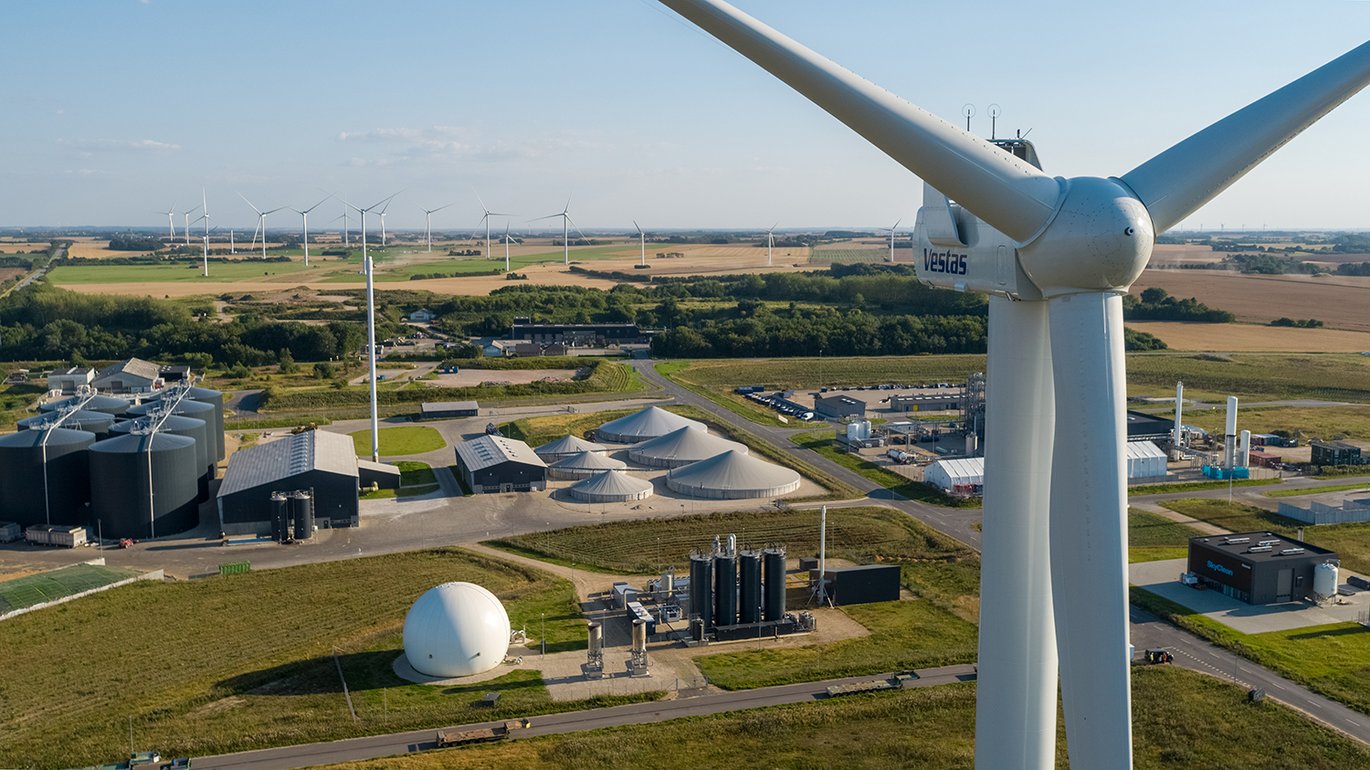How to make industrial production even greener
A new research project at Aarhus University will explore the possibilities of developing a financially efficient green production bubble, in which the energy used is greener than the national average. The project will also make it easier for companies to buy electricity at the right times.

GreenLab Skive is the world's first green industrial park, and last year they received a DKK 20 million donation from the Villum Foundation. Some of this funding has been allocated to new research projects, including the GreenBubble project, in which researchers from the Department of Mechanical and Production Engineering at Aarhus University, in collaboration with GreenLab Skive, will study how to find the right balance between investments in green technology, and the return on these investments for the green transition: a financially efficient green production bubble.
"In the GreenBubble project, we want to design a production facility in which the energy used is greener than the average in Denmark. For example, energy in GreenLab Skive has to be greener than the energy used generally in Denmark. In other words, you create a green bubble around your production facility, and you can only do this if you have a local production by wind turbines, solar cells, etc., for example. This is one part of the project," says Associate Professor Gorm Bruun Andresen from the Department of Mechanical and Production Engineering at Aarhus University.
He continues:
"The second part is that a production facility can also plan its energy consumption if there is no wind or sun. A factory with a large energy consumption will usually plan its purchases of electricity for when it’s cheapest, but instead, it could also plan its purchases for when it’s the most green. In GreenBubble, we want to study how green a production facility can become if it is willing to compromise on how cheaply it can do so."
Aims to explore the interplay between energy prices and carbon emissions
The research project will be conducted in collaboration with GreenLab Skive, and therefore the Green Industrial park will also be the object of studies by the researchers. This will be through the open-source tool PyPSA, which the researchers will use to build a computer model of the industrial park.
"The tool consists of a number of building blocks that we use to build different energy installations. This means we can build today's GreenLab, but we can also create the GreenLab of the future on which we try things out. For example, we can add new electricity storage units and see whether this makes the park greener," says Gorm Bruun Andresen.
With PyPSA, it is possible for the researchers to measure energy prices and carbon emissions hour by hour with new additions to the park, and it is also possible to optimise according to whether it is to be cheapest, have the lowest carbon emissions, or a combination of the two. In this way, researchers can examine the interplay between energy price and the dynamic carbon emissions for Greenlab Skive, and according to Gorm Bruun Andresen, this is the core of the research project.
"Today, factories usually plan their purchases of electricity according to when they predict it will be cheapest. They usually plan from day to day. In Denmark, however, you can also keep hour-by-hour track of how green the electricity is, and a factory can therefore plan its purchases according to when the electricity is greenest. This compromise has not been made in many studies, but in GreenBubble, we want to study its potential," says Gorm Bruun Andresen.
However, this is not the only aspect worth looking at, because Gorm Bruun Andresen also points out that factories today typically use green certificates to be green.
Traditional green certificates work by a factory purchasing a certificate in order to match its consumption with corresponding generation from renewable energy sources. However, according to Gorm Bruun Andresen, this presents a problem, because the factory is still consuming non-green electricity.
"If a factory pays others to generate green electricity, there is no correlation in time. The factory isn’t using green electricity itself. On the contrary, the factory is maintaining consumption of non-green electricity. Therefore, we want to find out where the green electricity really is, hour by hour, so it’s easier for factories to buy electricity at the right times," he says.
The research project will be a collaboration with GreenLab Skive, and besides Gorm Bruun Andresen, Associate Professor Marta Victoria, an expert in solar cells and energy modelling from the Department of Mechanical and Production Engineering, is also affiliated with the project.
Associate Professor Gorm Bruun Andresen
Department of Mechanical and Production Engineering
Mail: gba@mpe.au.dk
Tel.: +45 29426179
